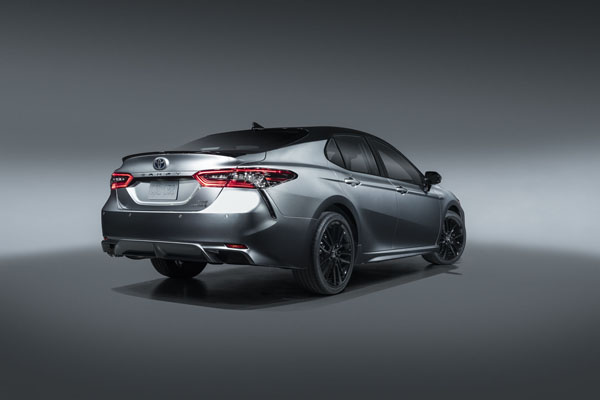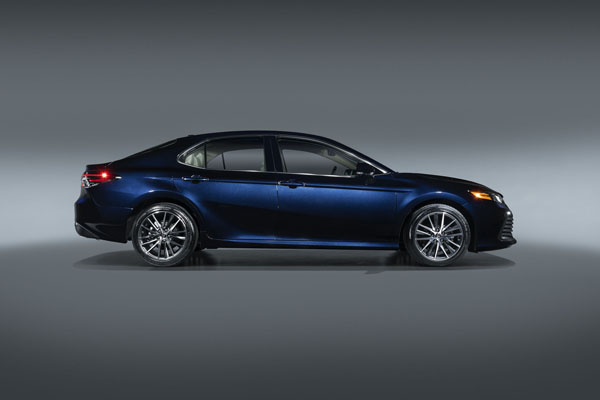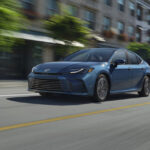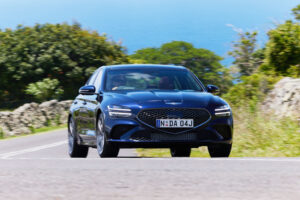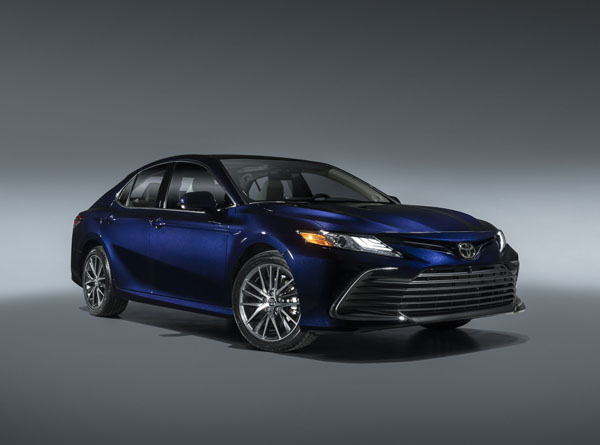 Here’s a thought. What if the Corona virus (aka COVID-19) had cast its deadly spell over the world a decade ago. With Australia now waking up to the disadvantages of relying on imported goods rather than making products in situ, perhaps we would still have a burgeoning automobile industry Down Under.
Here’s a thought. What if the Corona virus (aka COVID-19) had cast its deadly spell over the world a decade ago. With Australia now waking up to the disadvantages of relying on imported goods rather than making products in situ, perhaps we would still have a burgeoning automobile industry Down Under.
How ironic that after 30 years the maker of the once popular Toyota Corona might still be turning out the Camry here. Instead the eighth generation of its once most popular vehicle is now coming from Toyota in Japan. So much for local knowledge.
Camry is the first sedan to adopt Toyota’s New Global Architecture, resulting in a lower roof and bonnet and improved dynamics due to its lower centre of gravity and greater torsional rigidity.
Two new powertrains are offered – a redesigned hybrid system with a new direct-injection four-cylinder engine that delivers more power, flexibility and efficiency. As well as a new direct injection V6 and eight-speed transmission.
Camry, for the first time according to grade, also offers fully independent rear suspension, 19-inch alloy wheels, drive mode select, LED head lamps, an electric parking brake, 10-inch head-up display and a segment-first opening panoramic roof, plus across-the-board adoption of active cruise control and a pre-collision safety system with autonomous emergency braking.
To go with this comes new titles, Ascent and Ascent Sport (four-cylinder petrol or hybrid), SX (four-cylinder or V6) and SL (all three powertrains). The entry-level Ascent 3.5 V6 comes to market at $27,690, plus on-road costs. On test was the Camry SL V6 ($43,990).
STYLING
Who would have thought 30 years ago that the word ‘aggressive’ could be mentioned in the same breath as the mild-mannered Camry. Today’s stylists have penned two-piece grilles across the range, with those of upper grades, including SL, having a more assertive look.
At the rear, the C-pillar area is shaped with corner edges that promote smooth airflow. The Camry SL has 18×8 inch bright machine finished and silver-painted alloy wheels.
All models have LED Bi-Beam headlamps, daytime lamps and rear lamps, while the low-beam road-surface illumination pattern has been increased for greater visibility.
INTERIOR
A cockpit-style environment has gauges angled towards the driver. A character line flows down from the instrument cluster bisecting the centre console, putting controls close at hand. Interior surfaces employ premium soft-touch materials.
Re-worked seats offer improved ergonomics and comfort with the SL featuring a Camry first of ventilated seats. Eight-way power adjustment and power lumbar adjustment on the driver’s side is augmented by an eight-way power-adjustable front passenger’s seat.
Rear-seat accommodation is more refined, providing improved comfort and ergonomics.
INFOTAINMENT
The only press-test vehicle I have driven without a radio fitted was an early Camry import with a stripped-back price. The privation was unpalatable. Since then I’ve always a had a soft spot for automobile audios.
Camrys are no longer left wanting in this field with the latest generation featuring a multimedia system, offering integrated information with less distraction.
A 7-inch multi-information display is situated in the instrument cluster and in the SL an 8-inch display audio with satellite navigation, premium steering wheel and premium shift lever, with paddle shift as an additional feature. Audio units are neatly fitted flush into the centre console.
ENGINES / TRANSMISSIONS
The new 24-valve twin-cam 3.5-litre V6 petrol engine is matched to Toyota’s first eight-speed direct-shift automatic transmission.
SAFETY
All models are equipped with seven airbags and a comprehensive range of electronic safety features including hill-start assist and a sway-warning system.
Safety technology standard across the range includes a pre-collision safety system, autonomous emergency braking and lane departure alert with steering assist. All-speed active cruise control, auto high beam and reversing camera are also standard.
The SL adds blind-spot monitor and rear cross-traffic alert, rain-sensing wipers and electro-chromatic interior rear-view mirror, while the three higher grades have front and rear parking sensors.
DRIVING
The new V6 and eight-speed automatic fell short of the aggression in performance promised by the new design. However, it’s still a leading member of the mid-size sedan segment in its quality of materials and construction. It’s well off for space and safety features, and in one of the many firsts for Camry, the automatic transmission incorporates down-shift blipping, plus Drive Mode Select – Eco, Normal and Sport – and manual-style sequential shifts.
All V6 models have steering-wheel mounted paddle shifts, which give some sort of performance control to the driver. Nothing exciting.
With a rated fuel consumption on the combined urban / highway cycle of 8.7 litres per 100 kilometres the test Camry V6 came up with figures straddling 12 litres per 100 in the city and suburbs and 5.5 litres per 100 kilometres on motorway runs.
The new TNGA underpinnings make the Camry more agile during accelerating, braking and cornering. Brakes have greater power and feel thanks to larger rotors all round.
Camry now has an electric parking brake plus brake-hold.
All Camry models have tilt and telescopic steering column adjustment, with power adjustment and a memory function on SL. A turning circle of more than 12 metres is poor and can focus the driver’s attention when parking.
In-cabin storage includes a 7.3-litre console box to that can take a tablet and there is a small storage space with a lid on the driver’s side lower instrument panel, as well as a two-level tray in the centre console with a USB/AUX terminal, and 12V DC accessory socket in the lower tray front.
SUMMING UP
Toyota reckons the new Camry has all the ingredients to continue as Australia’s best-selling mid-size car, a position it has now held for the past 23 years. Increasing competition from rivals has kept Toyota on its toes with attractive new design and added equipment.
AT A GLANCE
MODEL RANGE
Ascent 2.5-litre: $27,690
Ascent Sport 2.5-litre: $29,990
SX 2.5-litre: $33,290
SL 2.5-litre: $39,990
Ascent Hybrid: $29,990
Ascent Sport Hybrid: $31,990
SL Hybrid: $40,990
SX V6: $37,290
SL V6: $43,990
All grades: premium paint $450
SX: panoramic roof $1950
Note: These prices do not include government or dealer delivery charges. Contact your local Toyota dealer for drive-away prices.
SPECIFICATIONS (Camry SL 3.5-litre quad cam V6 VVT-iW petrol, 8sp automatic sedan)
ENGINE:
Capacity: 3.456 litres
Configuration: V6
Maximum Power: 224 kW @ 6000 rpm
Maximum Torque: 362 Nm @ 4700 rpm
Fuel Type: Petrol 95 RON
Combined Fuel Cycle (ADR 81/02): 8.7 L/100km
DRIVELINE: Eight-speed automatic
DIMENSIONS, WEIGHT AND CAPACITIES:
Length: 4905 mm
Wheelbase: 2825 mm
Width: 1840 mm
Height: 1445 mm
Turning Circle: 12.4 metres
Kerb Mass: 1070 kg
Fuel Tank Capacity: 60 litres
BRAKES:
Front: Ventilated disc
Rear: Disc
STANDARD WARRANTY:
Five years / unlimited kilometres




